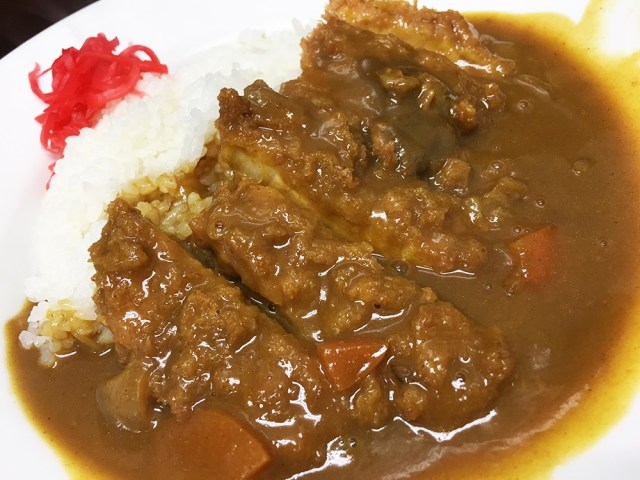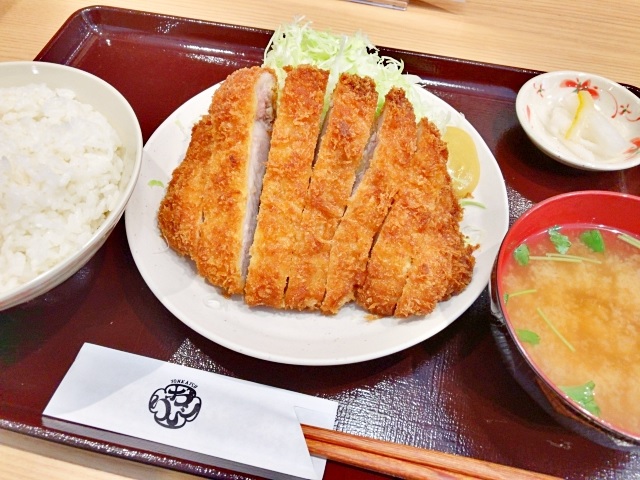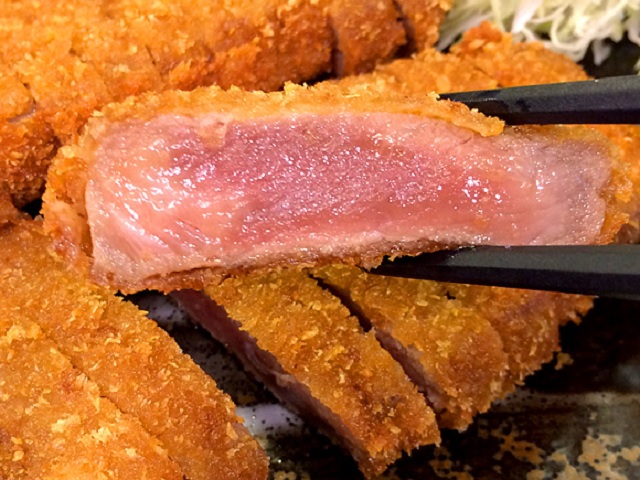
Embassy of Japan in the U.K. posts video explaining what katsu is and isn’t, and we delve into the non-pork varieties.
The purpose of an embassy is two-fold. Its first mission is to assist and protect citizens of its home country while abroad, but just as important is its role in representing and sharing its home-country culture with citizens of its host countries.
In pursuing that second objective, the embassy of Japan in the U.K.’s official English-language Twitter account has put out an informative video explaining what the Japanese food katsu is…and also what it isn’t. Recently, there’s been a stubborn perception in the U.K. that “katsu” is a type of Japanese curry, but the truth is actually very different, as the video shows.
🗣️ “Katsu is a type of curry, right?” ❌🙅
— Embassy of Japan UK (@JAPANinUK) August 5, 2020
Find out why #katsu may be more than what you think 👇#washoku #JPNUKseason #JapanUK pic.twitter.com/ku1UWXFWgT
So nope, katsu isn’t a kind of curry. You can have curry without katsu, and you can also enjoy katsu in a variety of ways that are completely curry-free.
It’s pretty easy to keep straight as long as you know the etymology of the word katsu, which is actually a corrupted pronunciation of the English word “cutlet.” Katsu and cutlet might seem worlds apart, but in the Japanese language almost all consonants have to be followed by a vowel, and even then, a number of consonant-vowel combinations that would be possible in English, like “tu,” don’t exist. Because of that, “cutlet” became “katsuretsu,” and while a mouthful of “katsuetsu” is a delicious thing to eat, the four-syllable word is a bit of a mouthful to say, so nine times out of ten “katsuretsu” gets shortened to just “katsu.”
So if you put a cutlet on some curry rice, then that’s not “katsu,” it’s “katsu curry.” A cutlet on top of a donburi/bowl of rice? Katsudon. And a cutlet between two slices of bread? That’s a katsu sando, since in the same way cutlet became katsuretsu and then katsu, in Japanese “sandwich” became “sandouicchi,” which then gets shortened to “sando” for convenience.
But while the theme of the video is that katsu just means cutlet, there’s actually a little extra nuance to the word. Though you can slice and fry any kind of meat, when Japanese people say “katsu” they’re usually referring to a pork cutlet. Technically, “pork cutlet” should be “tonkatsu,” but “tonkatsu” refers to a pork cutlet served by itself, not on top of, in, or sandwiched by any other foodstuff.
▼ Tonkatsu
When you hear “katsu curry,” “katsudon,” or “katsu sando,” though, you can be sure that the cutlet you’re getting is a pork one. So what about other kinds of meat?
● Beef: The Japanese word for beef is “gyuniku,” so a beef cutlet is “gyu katsu.” However, the English word “beef,” which becomes “bifu,” is also readily understood in Japan, so “bifu katsu” is another way to say “beef cutlet.”
● Chicken: The Japanese word for chicken is “toriniku,” so a chicken cutlet should be “tori katsu,” right? Nope, sorry. For some reason, “tori katsu” never really caught on as a word, and instead everyone says “chikin katsu”/”chicken katsu.”
● Shrimp: You may never have thought of the possibility of using shrimp to make a cutlet, but it’s a delicious creation that you can often find as part of a hamburger-bun sandwich at Japanese fast food restaurants. In the opposite situation from chicken katsu, although “shurinpu” (from “shrimp”) is a word in Japanese, for shrimp cutlets the sea creature’s Japanese name, “ebi,” is used, making the term “ebi katsu.”
▼ Gyu katsu
From there, the various cutlets all work like the standard katsu. Curry with beef cutlet? Gyu katsu/beef katsu curry. Chicken cutlet rice bowl? Chicken katsudon. Shrimp cutlet sandwich? Ebikatsu sando.
Now, if you’ll excuse us, we’ve got a very difficult decision to make now that we’ve reminded ourselves how many katsu-related options we have for lunch.
Source: Twitter/@JAPANinUK
Top, insert images ©SoraNews24
● Want to hear about SoraNews24’s latest articles as soon as they’re published? Follow us on Facebook and Twitter!
Follow Casey on Twitter, where he’s never felt bad while eating a katsu sando.



 Katsudon vs. tonkatsu vs. katsu sandwich – What’s the best way to eat pork cutlet in Japan?
Katsudon vs. tonkatsu vs. katsu sandwich – What’s the best way to eat pork cutlet in Japan? How to make an imitation katsudon pork cutlet bowl using imitation katsu【SoraKitchen】
How to make an imitation katsudon pork cutlet bowl using imitation katsu【SoraKitchen】 Celebrities slam katsu curry, divide netizens: “It’s a dish where 1+1 never actually makes 2”
Celebrities slam katsu curry, divide netizens: “It’s a dish where 1+1 never actually makes 2” All-plant-based katsu curry arrives at Ikea Japan
All-plant-based katsu curry arrives at Ikea Japan We try Ajinomoto’s European Chicken Katsu Curry Style frozen gyoza that has no katsu in it
We try Ajinomoto’s European Chicken Katsu Curry Style frozen gyoza that has no katsu in it Japan’s new difficult-to-drink-from beer glass protects your liver, but it’s a brutal experience
Japan’s new difficult-to-drink-from beer glass protects your liver, but it’s a brutal experience New Pokémon ice cream, dessert drinks, and cool merch coming to Baskin-Robbins Japan【Pics】
New Pokémon ice cream, dessert drinks, and cool merch coming to Baskin-Robbins Japan【Pics】 New samurai glasses are Japan’s latest weird must-have souvenir
New samurai glasses are Japan’s latest weird must-have souvenir Come play hide-and-seek on a deserted Japanese island this August and November
Come play hide-and-seek on a deserted Japanese island this August and November Nintendo history you can feel – Super NES, N64, and GameCube controllers become capsule toys
Nintendo history you can feel – Super NES, N64, and GameCube controllers become capsule toys Demon Slayer: Kimetsu no Yaiba gets new roller coaster attractions and food at Universal Studios Japan
Demon Slayer: Kimetsu no Yaiba gets new roller coaster attractions and food at Universal Studios Japan Doraemon found buried at sea as scene from 1993 anime becomes real life【Photos】
Doraemon found buried at sea as scene from 1993 anime becomes real life【Photos】 Infographic shows how working culture differs across the globe
Infographic shows how working culture differs across the globe Hello, cosmetics! Clinique teams up with Hello Kitty this summer for first-time collaboration
Hello, cosmetics! Clinique teams up with Hello Kitty this summer for first-time collaboration Japan’s new canned chu-hai with fresh lemon slice: disappointing gimmick or drink revelation?
Japan’s new canned chu-hai with fresh lemon slice: disappointing gimmick or drink revelation? “The most Delicious Cup Noodle in history” – Japan’s French Cup Noodle wins our heart【Taste test】
“The most Delicious Cup Noodle in history” – Japan’s French Cup Noodle wins our heart【Taste test】 Kyoto Tower mascot termination reveals dark side behind cute Japanese characters
Kyoto Tower mascot termination reveals dark side behind cute Japanese characters Starbucks releases a cute Frappuccino and Unicorn Cake…but not in Japan
Starbucks releases a cute Frappuccino and Unicorn Cake…but not in Japan McDonald’s Japan’s Soft Twist Tower: A phantom ice cream only sold at select branches
McDonald’s Japan’s Soft Twist Tower: A phantom ice cream only sold at select branches How to order snacks on a Shinkansen bullet train in Japan
How to order snacks on a Shinkansen bullet train in Japan To combat declining birth rate, Japan to begin offering “Breeding Visas” to foreigners
To combat declining birth rate, Japan to begin offering “Breeding Visas” to foreigners 10 things you should buy at 7-Eleven in Japan
10 things you should buy at 7-Eleven in Japan Studio Ghibli releases anime heroine cosplay dresses that are super comfy to wear
Studio Ghibli releases anime heroine cosplay dresses that are super comfy to wear Woman charged for driving suitcase without a license in Osaka
Woman charged for driving suitcase without a license in Osaka Studio Ghibli unveils My Neighbour Totoro miniature house model
Studio Ghibli unveils My Neighbour Totoro miniature house model Kyoto experiencing problems with foreign tourists not paying for bus fares, but not on purpose
Kyoto experiencing problems with foreign tourists not paying for bus fares, but not on purpose Fighting mild hunger with a Japanese soda that turns into jelly in the stomach【Taste test】
Fighting mild hunger with a Japanese soda that turns into jelly in the stomach【Taste test】 Studio Ghibli’s Howl’s Moving Castle tapestry unveiled in Japan for first time
Studio Ghibli’s Howl’s Moving Castle tapestry unveiled in Japan for first time McDonald’s new Happy Meals offer up cute and practical Sanrio lifestyle goods
McDonald’s new Happy Meals offer up cute and practical Sanrio lifestyle goods Sales of Japan’s most convenient train ticket/shopping payment cards suspended indefinitely
Sales of Japan’s most convenient train ticket/shopping payment cards suspended indefinitely Sold-out Studio Ghibli desktop humidifiers are back so Totoro can help you through the dry season
Sold-out Studio Ghibli desktop humidifiers are back so Totoro can help you through the dry season Japanese government to make first change to romanization spelling rules since the 1950s
Japanese government to make first change to romanization spelling rules since the 1950s Foreigner’s request for help in Tokyo makes us sad for the state of society
Foreigner’s request for help in Tokyo makes us sad for the state of society Ghibli founders Toshio Suzuki and Hayao Miyazaki contribute to Japanese whisky Totoro label design
Ghibli founders Toshio Suzuki and Hayao Miyazaki contribute to Japanese whisky Totoro label design Tokyo’s most famous Starbucks is closed
Tokyo’s most famous Starbucks is closed Princesses, fruits, and blacksmiths: Study reveals the 30 most unusual family names in Japan
Princesses, fruits, and blacksmiths: Study reveals the 30 most unusual family names in Japan The U.K. thinks Japanese curry is katsu curry, and people aren’t happy about it
The U.K. thinks Japanese curry is katsu curry, and people aren’t happy about it We try making a low-calorie katsu with tofu instead of pork【SoraKitchen】
We try making a low-calorie katsu with tofu instead of pork【SoraKitchen】 Japanese black curry “experiment” takes place at an unlikely restaurant branch in Tokyo
Japanese black curry “experiment” takes place at an unlikely restaurant branch in Tokyo Katsu curry rice you can eat with your hands? Mos Burger unveils new Rice Burger Katsu Curry
Katsu curry rice you can eat with your hands? Mos Burger unveils new Rice Burger Katsu Curry Instant katsu? Taste-testing the tempting promise of freeze-dried tonkatsu topping【Taste test】
Instant katsu? Taste-testing the tempting promise of freeze-dried tonkatsu topping【Taste test】 The newest must-eat Japanese KitKats: Deep-fried KitKat katsu on sticks
The newest must-eat Japanese KitKats: Deep-fried KitKat katsu on sticks What happens when a sweet bun maker teams up with a tonkatsu sandwich specialist?
What happens when a sweet bun maker teams up with a tonkatsu sandwich specialist? 103-year-old Japanese curry rice restaurant got dish right a century ago, still serves it today
103-year-old Japanese curry rice restaurant got dish right a century ago, still serves it today KFC puts its own spin on Japanese flavours with the new Katsu and Fillet Burger
KFC puts its own spin on Japanese flavours with the new Katsu and Fillet Burger Japan’s favorite pork cutlet sandwich maker also has awesome katsudon restaurant in Tokyo Station
Japan’s favorite pork cutlet sandwich maker also has awesome katsudon restaurant in Tokyo Station Salmon katsudon? Tokyo restaurant’s specialty is like a deep-fried sashimi lunch【Photos】
Salmon katsudon? Tokyo restaurant’s specialty is like a deep-fried sashimi lunch【Photos】 Our writer falls victim to Katsuya’s new Full Power Egg
Our writer falls victim to Katsuya’s new Full Power Egg 10-second Japanese katsu curry – Is this the world’s most amazing instant food?【Video】
10-second Japanese katsu curry – Is this the world’s most amazing instant food?【Video】 We try Komeda Coffee’s new meatless ham katsu burger, and never want real fried ham ever again
We try Komeda Coffee’s new meatless ham katsu burger, and never want real fried ham ever again Japanese pork cutlet chain unveils its latest fusion food: cornflake chicken katsu bowls!
Japanese pork cutlet chain unveils its latest fusion food: cornflake chicken katsu bowls!
Leave a Reply